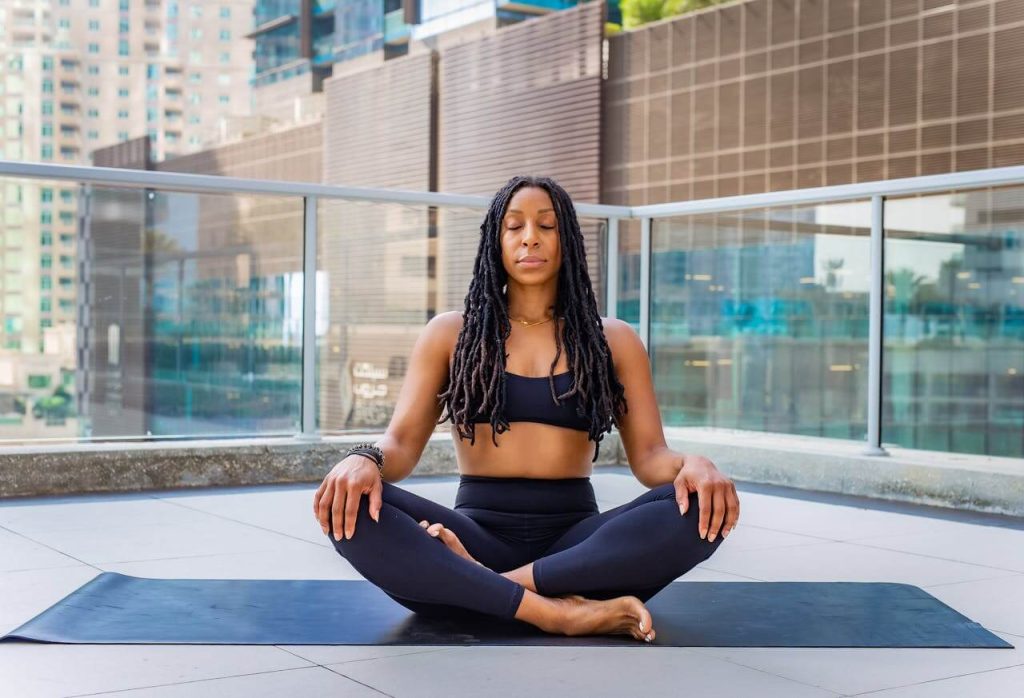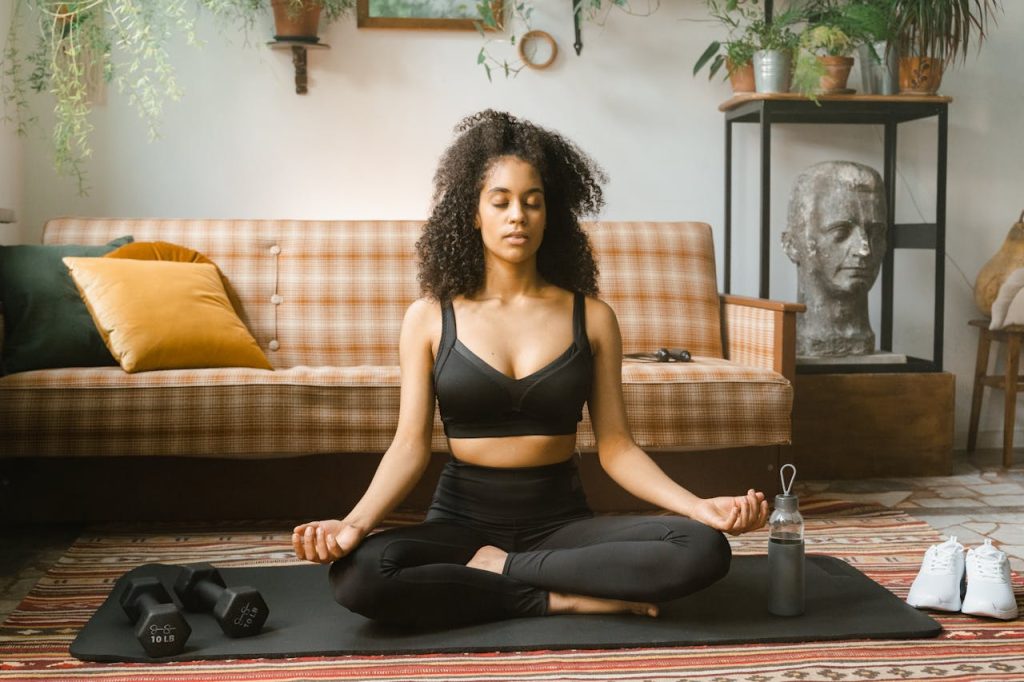Learn how to properly meditate with this step-by-step guide from Mindfulness Meditation Hub. Discover techniques, benefits, and tips to start your mindfulness journey and achieve lasting inner peace.
Overview
Meditation is more than just sitting quietly—it’s a powerful practice that nurtures your mind, body, and soul. In this blog post, you’ll learn how to properly meditate using proven techniques that enhance focus, reduce stress, and cultivate self-awareness. You’ll also discover common mistakes to avoid, the best postures and breathing methods, and how to build a consistent meditation routine. Whether you’re a beginner or looking to deepen your practice, this guide will help you make meditation a meaningful part of your life.
What You Will Learn in This Blog Post
- The true meaning and purpose of meditation
- Step-by-step guidance on how to properly meditate
- Different types of meditation and how to choose one that suits you
- Common mistakes beginners make and how to avoid them
- Tips to create a peaceful meditation space
- How Mindfulness Meditation Hub can help you master meditation
What Does It Mean to Meditate Properly?
Before diving into techniques, it’s important to understand what meditation truly is. Meditation isn’t about suppressing your thoughts—it’s about becoming aware of them without judgment. Learning how to properly meditate means training your mind to stay present, focused, and at peace, even in the face of life’s distractions.
At its core, meditation involves three key elements:
- Awareness—Observing your thoughts and emotions as they arise.
- Focus—Gently bringing your attention back when your mind wanders.
- Acceptance—Allowing each moment to unfold naturally without resistance.
When practiced consistently, meditation can transform your mindset, reduce anxiety, and help you develop a deeper sense of inner calm.

Step-by-Step Guide on How to Properly Meditate
1. Choose the Right Environment
Creating the right atmosphere is crucial for effective meditation.
- Find a quiet space where you won’t be disturbed.
- Dim the lights or use natural lighting.
- Consider adding calming elements like candles, plants, or soft music.
A peaceful environment helps your mind settle and supports the process of how to properly meditate.
2. Find a Comfortable Position
You don’t need to sit cross-legged on the floor unless it feels natural to you. You can sit on a chair, cushion, or even lie down—what matters most is comfort and posture.
- Keep your back straight to encourage alertness.
- Relax your shoulders and hands.
- Close your eyes gently.
Your posture plays an important role in helping you stay focused and balanced during meditation.
3. Focus on Your Breath
Breathing is the anchor of most meditation practices. To learn how to properly meditate, start by paying attention to your natural breath.
- Inhale slowly through your nose.
- Exhale gently through your mouth.
- Notice the rhythm, the rise and fall of your chest, and how the air feels.
When your mind drifts, simply bring your focus back to your breath without frustration. This mindful redirection is the essence of meditation.
4. Observe Your Thoughts Without Judgment
Many beginners struggle with an overactive mind. That’s perfectly normal. Instead of trying to “stop thinking,” just observe your thoughts as they come and go.
- Imagine your thoughts as clouds passing through the sky.
- Don’t chase or resist them—just watch them drift by.
This awareness is what teaches you how to properly meditate—staying centered amidst mental noise.
5. Start with Short Sessions
Meditation doesn’t need to last for hours. In fact, starting small can help you stay consistent.
- Begin with 5 to 10 minutes per day.
- Gradually increase your duration as your focus improves.
- The key is consistency, not perfection.
Even short, daily sessions can bring noticeable improvements in your mood, clarity, and emotional balance.
Different Types of Meditation You Can Try
Understanding various meditation styles can help you decide how to properly meditate for your needs. Here are some popular methods:
1. Mindfulness Meditation
Focus on your breath, sensations, and the present moment. It’s ideal for stress relief and emotional regulation.
2. Loving-Kindness Meditation (Metta)
Cultivate compassion toward yourself and others by repeating phrases like “May I be happy, may I be peaceful.”
3. Guided Meditation
Listen to a recorded guide or teacher—perfect for beginners who want structure. Mindfulness Meditation Hub offers guided sessions tailored for all experience levels.
4. Body Scan Meditation
Systematically focus on each part of your body to release tension and enhance mind-body awareness.
5. Transcendental Meditation
Involves silently repeating a mantra to calm the mind and reach deeper levels of consciousness.
Exploring different types helps you understand how to properly meditate in a way that fits your goals and personality.

Common Mistakes to Avoid While Meditating
Many people quit meditation because they think they’re “doing it wrong.” Here are a few pitfalls to avoid:
- Expecting instant results – Meditation is a gradual process.
- Judging your progress—There’s no perfect session; each one is unique.
- Skipping consistency—Daily practice, even for a few minutes, is more beneficial than long occasional sessions.
- Being too hard on yourself—be gentle and patient.
Understanding these challenges is part of learning how to properly meditate effectively and sustainably.
Tips for Building a Lasting Meditation Habit
To make meditation part of your lifestyle, try these practical tips:
- Meditate at the same time each day (morning or evening).
- Use reminders or set a gentle alarm to keep you accountable.
- Keep a meditation journal to track your feelings and progress.
- Join online meditation communities like Mindfulness Meditation Hub for guidance and support.
Building habits is the secret to mastering how to properly meditate long-term.
The Benefits of Proper Meditation Practice
When you commit to meditating properly, the rewards are life-changing:
- Reduced stress and anxiety
- Improved focus and concentration
- Enhanced emotional intelligence
- Better sleep quality
- Greater self-awareness and patience
- A sense of inner peace and happiness
These benefits aren’t just spiritual—they’re backed by science. Numerous studies show that meditation positively impacts brain function, emotional regulation, and overall well-being.
How Mindfulness Meditation Hub Can Help You
At Mindfulness Meditation Hub, we specialize in helping people learn how to properly meditate through guided meditations, mindfulness courses, and personalized coaching.
Whether you’re new to meditation or seeking to deepen your practice, our programs are designed to:
- Teach proper breathing and focus techniques
- Provide structured daily meditation routines
- Offer live and recorded guided meditations
- Support you in maintaining consistency and motivation
Our goal is to make mindfulness accessible to everyone—because peace of mind should never feel out of reach.
Final Thoughts
Learning how to properly meditate is one of the most valuable investments you can make in your well-being. It takes patience and practice, but the results are profound—greater clarity, balance, and emotional freedom.
At Mindfulness Meditation Hub, we’re here to guide you on every step of your journey toward inner peace. Start small, stay consistent, and watch your life transform through the power of meditation.

